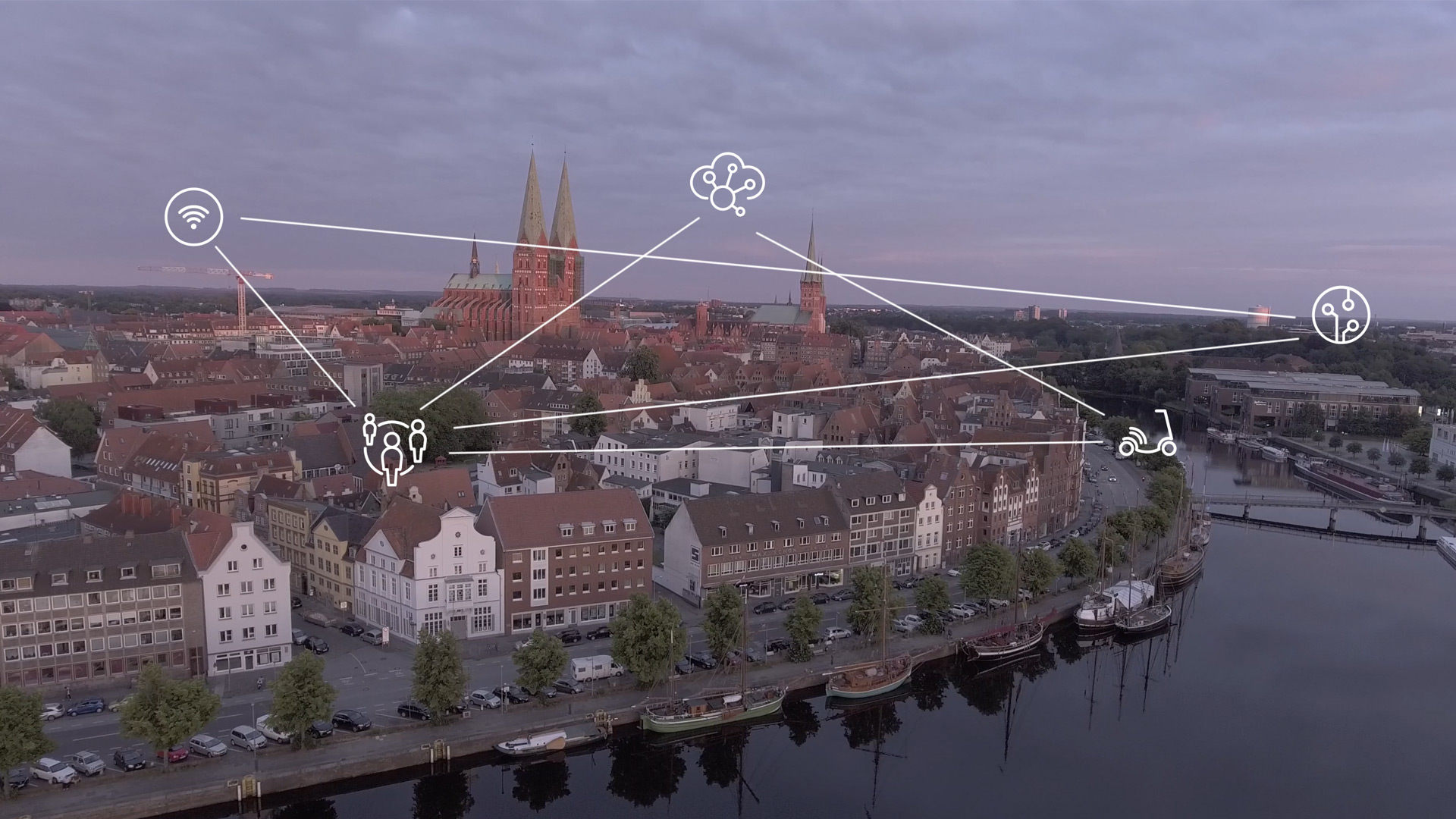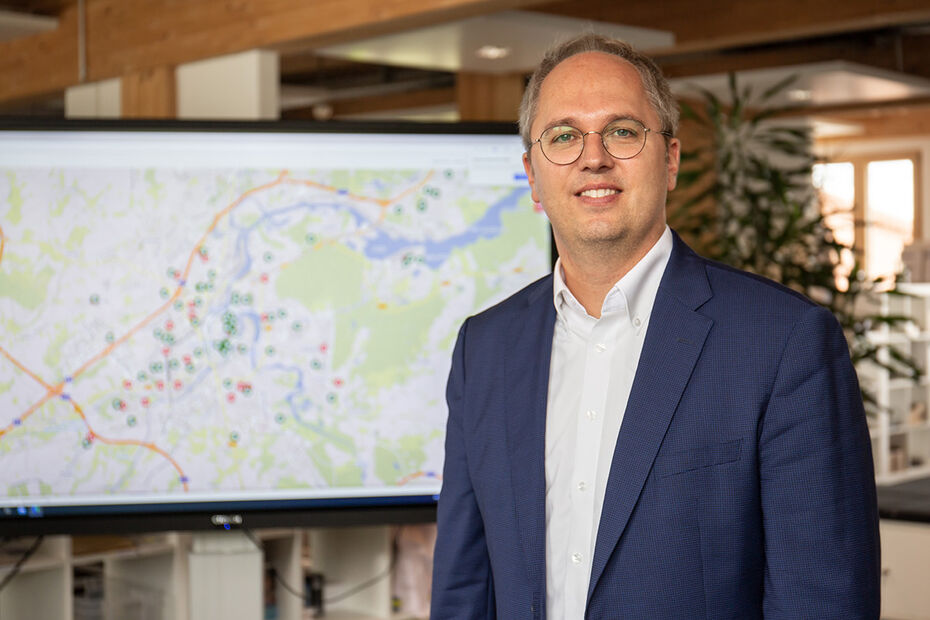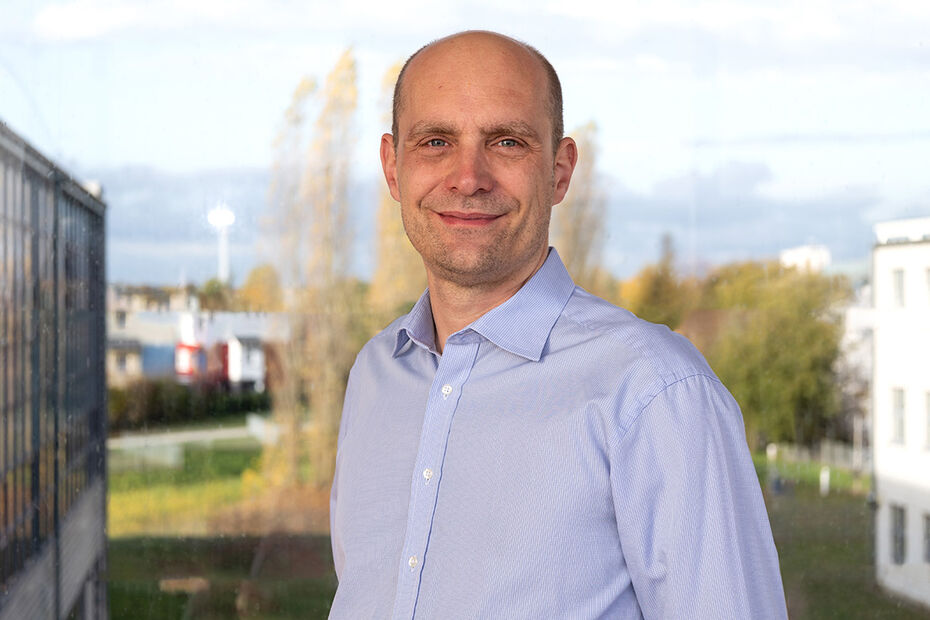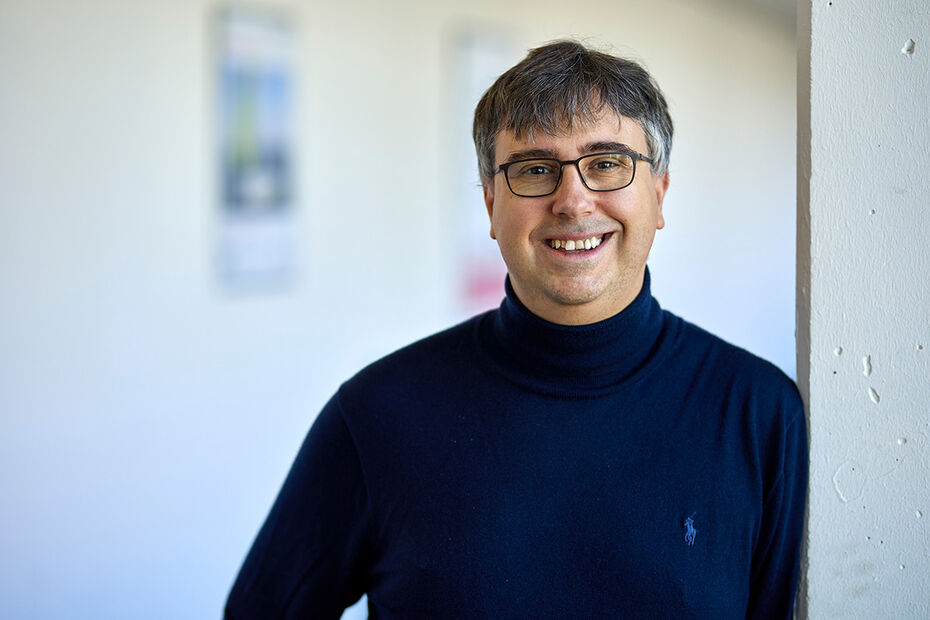Cocreating future cities
A position paper published by Deutscher Städtetag (Association of German Cities) states that livable cities are smart cities. This is based on the observation that intelligent mobility and sustainable climate protection are no longer conceivable without the use of data. According to Frank Schwartze, Professor for Urban Planning at Technische Hochschule Lübeck: Smart cities are key to the complex challenges of the future. Digital technology will shape our future decisions and processes.
To date, no city in the world has yet achieved full smart city status. That being said, there are some cities that have made considerable progress in specific areas: Barcelona, for instance, successfully uses digital technologies to encourage citizen participation. Songdo, a district of the South Korean city of Incheon, impresses with networked data management. Singapore is a prime example of a smartly organized city that uses digital technologies, but not exclusively.
Smart cities, however, are not all the same. The development of a smart city is characterized by a number of process optimizations, all of which must have a clear objective. Whether the aim is to increase resource efficiency, make life more comfortable, or ensure a high degree of citizen participation affects all future decisions. This fundamental question must be clarified regardless of technological possibilities and, if necessary, defined for each application. Schwartze’ s viewpoint on this is clear: For me, it is not so much about an automated world that offers us a carefree life as it is about an intelligent city that uses resources in a smart way to become much more sustainable.
Private or Public Property?
Being committed to the core objectives is not enough: Smart cities are based on the digitization of our living environments. Thus, the question arises as to who owns the digital infrastructure and the data. Is it public property, like the sewage system and local transportation? Or is it a private asset that belongs to the owner of the application?
Jens Meier, Managing Director of Stadtwerke Lübeck, believes that many people view the issues of a digital city as part of public service. People expect to have access to data and digitization in addition to access to energy, water and public transportation. Digitalization is extremely important for cities and regions to maintain their attractiveness,
says Meier.
In Germany, he is in good company with this opinion. German cities believe that data is a collective good, but there are also strong players who see it differently,
says Schwartze. While data is often shared liberally on private platforms and messenger services, government applications such as the Cornona-Warn-App or the digital ID card are often viewed critically. Additional challenges arise from the discord between the analog reality in many offices and government agencies and citizens' fears of becoming too transparent. Whether private or public - the first necessary step on the way to a smart city is the digitization of processes.
IT Security
The IT security of the systems is of special importance. Stadtwerke CEO Meier emphasizes this aspect as well: As Stadtwerke (municipal utilities), we must handle highly sensitive data to ensure network security, energy supply and stability. That's why we consider ourselves the gatekeepers of that data. Acceptance of becoming a smart city also depends on the trust placed in data security.
Future quantum computers might be capable of overriding all encryption mechanisms. To address this issue, Sören Werth, professor of IT security at TH Lübeck, advocates the concept of cryptoagility. It means that security mechanisms can be replaced if necessary,
Werth explains.
Currently, most encryption algorithms rely on mathematical concepts such as prime factorization. There is an urgent need to develop advanced methods to allow for a new generation of encryption technologies. An initiative, which is currently a focus of global research.
Thus, President Biden issued an executive order to reduce the risk posed by quantum computers in the U.S. until 2035 by using post-quantum cryptography. Post-quantum cryptography is particularly important for smart cities, as data from many different sources is merged and processed, creating many potential entry points for malicious activity,
Werth points out.
Professor Andreas Schäfer is an expert in IT security as well. He recommends the use of open solutions. If we want people to make full use of smart city technologies, they must be based on different systems. Ideally, there should be a choice of providers. Therefore, it's important to have open data formats, open interfaces, and several different ways to interact.
This open approach also helps to ensure the security of a system. If no one knows how a system works, it is more difficult for others to understand and identify possible bugs. But the people who are really interested in finding bugs might actually find them,
Schäfer explains. By allowing everyone access to a system and giving them the ability to monitor it, makes the system safer.
A Local Example
As a city, we know more about a citizen than almost anyone else who stores data. We have an obligation to protect this data.
Jan Lindenau, Mayor of the Hanseatic City of Lübeck.
IT security is also very important to Jan Lindenau, the mayor of the Hanseatic City of Lübeck: As a city, we know more about our citizens than almost anyone else who handles data. Data we must protect at all costs.
At the same time the personal data must be distinguished from non-personal data, he adds. Non-personal data should be transparent and accessible to the public for the benefit of our citizens. That's why the city, in cooperation with the Stadtwerke, has launched a Smart City platform. The platform provides citizens with free information about public transportation, parking spaces, possible queues at outdoor pools, temperatures, and more. It's only the latest measure in the city's smart city strategy.
To find out how to arrive at a smart city strategy, what the biggest challenges and initial successes have been, listen to mayor Lindenau in our audio interview.
Stadtwerke CEO Meier is excited about these developments: Over the past few years, a remarkable dynamic has emerged in Lübeck. I believe we are making great progress towards becoming an intelligent and smart city. Some cities in Germany are still a step ahead of us, but I am confident that we will catch up very, very quickly. For instance, in the areas of digital infrastructure, fiber-optic expansion, WLAN, and network infrastructure. Additionally, we are a pioneer in the field of digital schools.
Sensors for a Smart City
Mit dem Laden des Videos akzeptieren Sie die Datenschutzerklärung von YouTube.
A cornerstone for the people in Lübeck is the LoRaWan radio network (long range wide area network) that has been set up by the Stadtwerke Lübeck in cooperation with the CoSA center of excellence at TH Lübeck. TH Lübeck is an absolute leader in sensor technology, and working with them is a great pleasure,
says Meier. LoRaWAN is a license-free radio standard. The installed antennas (gateways) create a cost-effective basis for numerous intelligent applications. The technology enables a wide range of applications:
Trash cans can alert you when they need to be emptied. Smart traffic regulates itself: When traffic in one direction is particularly heavy, traffic lights can extend green phases, and streetlights can adjust their light intensity based on the presence of cars or pedestrians. The batteries in those devices have such a low consumption that they only need replacement after several years.
These are only two applications for sensor technology in smart cities. Here, Horst Hellbrück, the head of CoSA center of excellence, outlines several other fields and possibilities.
Smart City Software
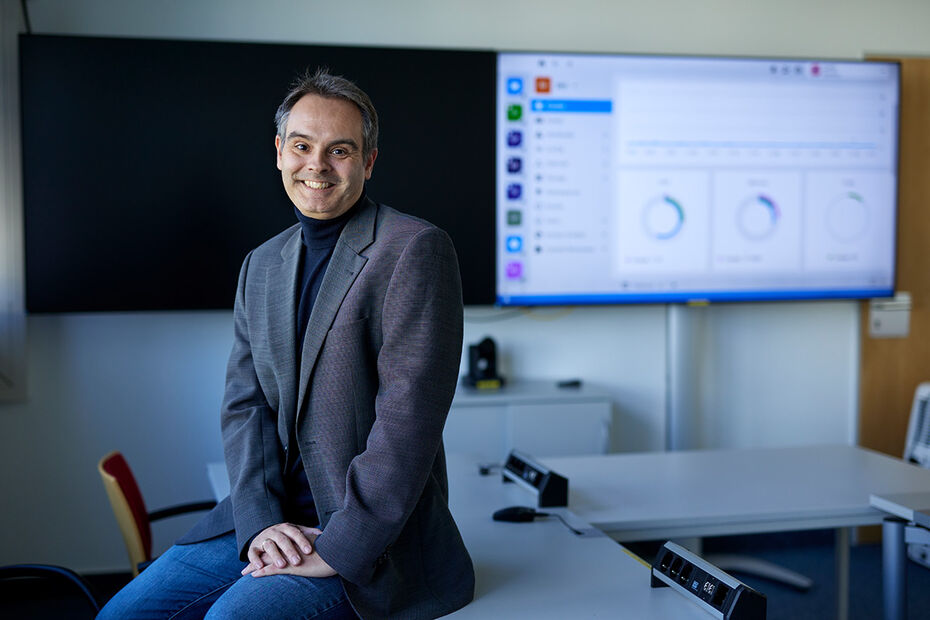
We need to align the technical services seamlessly with each other.
, explains IT professor Nane Kratzke. Professorship for Applied Computer Science at Technische Hochschule Lübeck. Foto: TH Lübeck

Software is another crucial building block. Nane Kratzke and Andreas Schäfer, both professors of computer science, specialize in this field. Software is the backbone of the smart city,
says Schäfer, it relies on software to control processes.
At this point, algorithms can already accomplish a lot without human intervention. In order to reduce human interfaces even further, Nane Kratzke focuses on the interconnection of various algorithms and technical services.
This approach saves resources and prevents errors, which is highly relevant for smart city processes: If, for example, you want to determine the flow of people in the shopping area of a city, you can do this using complicated and expensive special devices. Or, alternatively record the flow of people with cheap web cameras.
These images are then analyzed using neural networks for object detection. This method automatically anonymizes image data containing people, thereby avoiding many data protection issues. Possible results include, for example, how many adults, children and dogs were where at what time. The actual image data is deleted. The number of people can then be transferred to a control service, which controls the green phases of a traffic light and optimizes them.
Here, one automated process meshes with another. This requires that the services are coordinated with each other like small cogwheels, otherwise something completely wrong might happen in the end,
explains Kratzke. You try to break down the individual services into smaller units that can be combined in a meaningful way - so-called microservices - which ideally provide results in standardized, lightweight data formats.
Particularly desirable are reusable functionalities that can be coupled with different systems and data sources, as in modular systems. Smart traffic lights are, therefore, controlled locally / situationally and based on the flow of people. It is also possible to combine the same data with other data and create complex statistical models: Car and bicycle traffic, parking, weather, visitor numbers at the central attractions can be analyzed or the number of dogs can be compared with dog tax revenues and put in relation to each other.
Data: the Catalyst for the Smart City
Data provides opportunities for the development of predictive systems
, Data Science Professor Max Zimmermann. Professor for Data Science, Data Engineering, Machine Learning and MLOps at Technische Hochschule Lübeck.
Data Science Professor Max Zimmermann knows how to use the collected data in a smart city: The smart city provides us with day-to-day applications that improve our daily lives. It ensures a faster and much more pleasant commute to work, guarantees flowing traffic, as well as smart parking so you don't have to waste your time in traffic jams and trying to find parking spaces.
In Zimmermann's research, he used anonymized motion data from cell phones to predict possible bottlenecks in traffic and when they might occur. This application led to smart traffic light circuits that allow road traffic to flow unhindered. In an interview, Max Zimmermann explains how data processing and smart traffic light circuits work.
Statistical Modeling: Why Do People Move to a City?
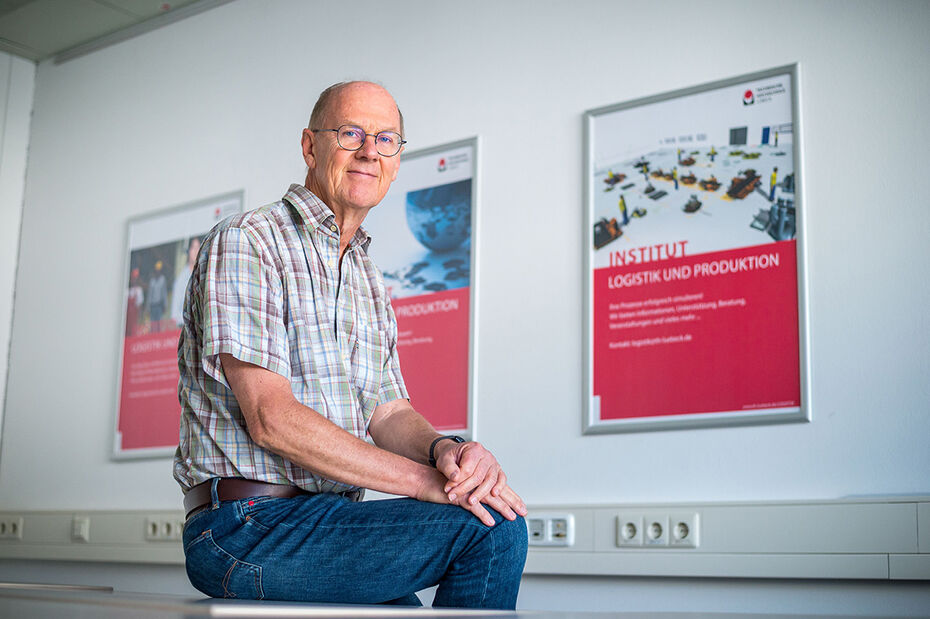
I want to illustrate which underlying conditions make the city center attractive to people.
Dr. Thomas Romeyke, Professorship for Business Informatics at Technische Hochschule Lübeck. Foto: TH Lübeck
A project by TH Lübeck, in collaboration with Wirtschaftsförderung Lübeck (Economic Development Lübeck), uses ten laser counters installed on the Old Town Island by the Wirtschaftsförderung in 2021. They record the flow of people in the Old Town, as well as certain information on the weather, public transportation and parking space utilization.
The data sources used provide heterogeneously structured data of varying frequency, quality, and detail. Professor Thomas Romeyke has therefore developed an IT system for the project that retrieves the regularly generated data from its sources, transforms it in a target-oriented manner and places it in a database for analysis. This project is like many other 'big-data' projects,
he says. Real-world data from a variety of settings tend not to match, and a meaningful transformation is almost always necessary before a reliable analysis can be made."
Professor Karen Cabos then uses the generated data to identify the factors that affect the number of people in the downtown area. I want to be able to show which underlying conditions make the inner city attractive to people,
Cabos says. In order to do so, she uses a structural regression model to determine the extent to which different variables affect visitor numbers.
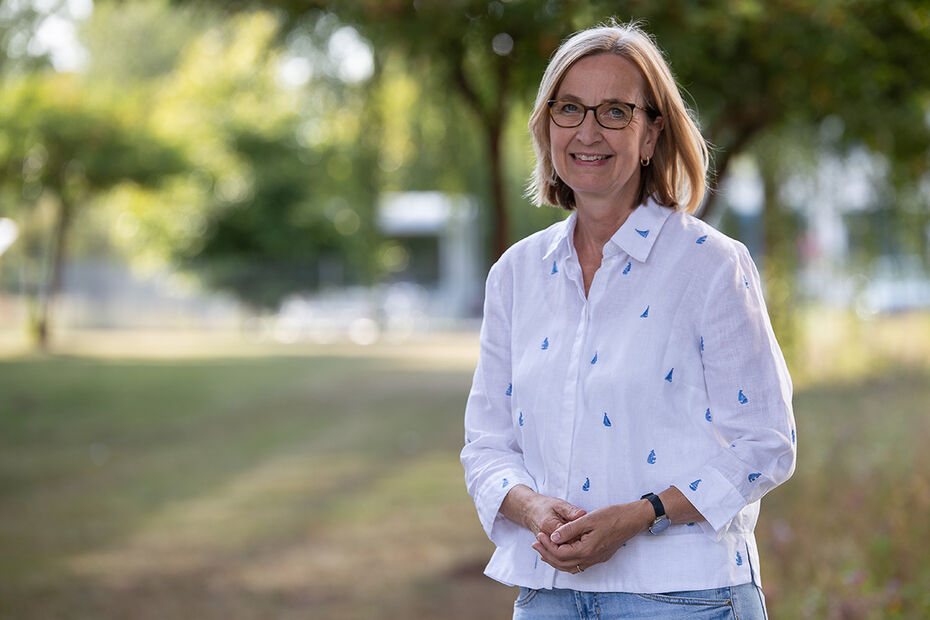
I want to show why people come to the city.
, says Economist Prof. Karen Cabos. Vice Dean of the Department of Mechanical Engineering and Business Administration at Technische Hochschule Lübeck. Foto: TH Lübeck
Cabos considers factors like parking, public transportation, time of year and time of day, weather or major events and other seasonal influences in her statistical model. Defining the influencing factors is as important as the dataset. Currently, we have reliable data gathered for just over a year,
Cabos explains, based on which we can already draw some preliminary results. It is already possible to make a fairly reliable statement that the parking situation in Kanalstrasse influences the public traffic in Hüxstrasse more than in Breite Strasse. Or that months with a high volume of tourists show an above-average demand for parking spaces in the city center. Specific effects, such as the influence of Corona measures or the 9-euro ticket, however, cannot yet be quantified using this dataset. That will only be possible in the coming years.
The flow of people and their underlying causes are strongly related to the traffic situation, but they also have a major economic impact. What makes commercial spaces attractive? Which streets and stores are particularly busy during the Christmas season? What do we need to do to attract people to the city center?

Smart Economy
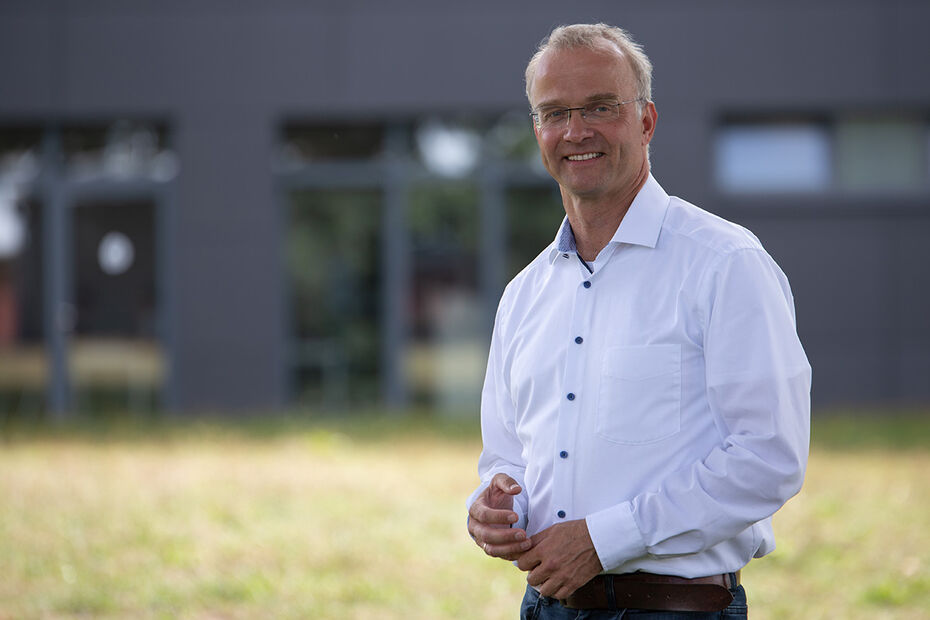
Technology is not an end in itself.
, states Economist Prof. Nils Balke. Professorship for Controlling, Investment and Financing at Technische Hochschule Lübeck. Foto: TH Lübeck

Nils Balke views the city through an economic lens: The transformation into a smart city is first and foremost technology-driven,
says the professor of controlling, investment and finance, "but technology is not an end in itself; it must provide benefits." Environmental and social aspects must be taken into account, but financial ones as well. Smart cities offer many opportunities for exciting new business models,
Balke explains. I myself find regional online marketplaces quite attractive as a business idea. We have a large group of people who want to support their local businesses.
Being a controller, it is of particular interest to him to control the smart city economically. He sees the city as a network of institutions, individuals, companies and other players. Ideally, I reduce transaction costs through cooperation,
explains the economist. Standardized processes reduce frictional losses. That said, how do you coordinate the players and what control and incentive systems can be put in place?
It appeals to me to apply the economic methodology from companies to the city,
says Balke. Outside the industrial sector, he offers his expertise in the further development of controlling structures in cultural institutions. We want to provide cultural institutions with tools that allow them to transparently present their economic situation, adapt their financial plans for exhibitions, performances and events flexibly, and identify risks in order to create an improved basis for project decisions.
Smart City = Smart Region
Mit dem Laden des Videos akzeptieren Sie die Datenschutzerklärung von YouTube.
For Lydia Rintz, a city is not a static structure, but an ever evolving place that constantly facilitates new forms of use.
Rintz is an architect and professor of urban planning and design at TH Lübeck. Cities reflect changes in our society, and just like society, they are in a constantly in a state of flux.
Take the image of the family, for example, which has changed dramatically in recent decades, as new forms of partnership and family have been established. In my opinion, a city is smart if it is flexible enough to accommodate these changes and accordingly allow for new forms of living,
Rintz explains. This presents a particular challenge for urban planners: We have no way of knowing, for example, what kind of vehicles we'll be using in 30 to 40 years, but we have to plan the streets for them today.
Rintz argues that planning should therefore not just focus on the smart city, but broaden its view to include the surrounding area. In urban planning, we not only talk about the smart city, we also refer to the smart region.

Taking stock
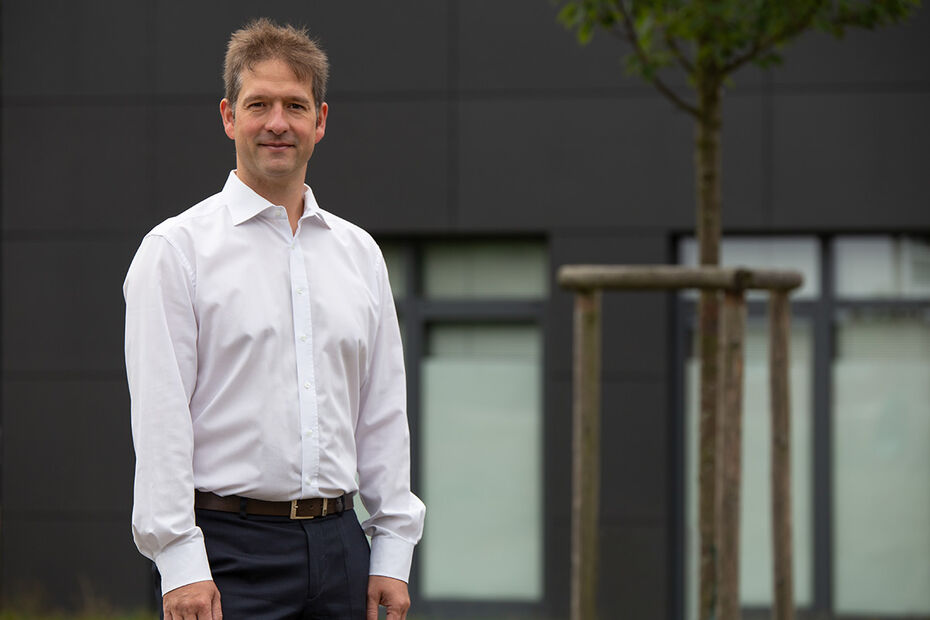
The Smart City extends beyond the city limits.
, Explains Environmental Scientist Prof. Max Schüler. Professor at the Department of Applied Natural Sciences at Technische Hochschule Lübeck. Foto: TH Lübeck

Professor Maximilan Schüler reiterates this point: When we think about the smart city, we can't separate it from its surroundings.
Schüler has been a professor of environmental studies at TH Lübeck since 2021. One focus of his work is the preparation of life cycle assessments. To create the life cycle assessment for a city, many different material and energy flows must be taken into account - these supply relationships usually don't stop at the city limits,
Schüler explains.
Residents of smart cities need food, building materials and electricity - none of which are usually produced within the city itself. From the perspective of an environmental scientist, a city becomes a smart city as soon as these relationships are no longer detrimental on the environment. The keyword here is 'zero impact',
according to Schüler.
Modern urban development shows various trends toward achieving 'zero impact'. Large industrial enterprises in the automotive sector are currently developing scenarios on how to bring industrial production back to the cities. In addition, many cities attempt to bring back agricultural production as well.
Networked thinking is the key to overcome the challenges of the transformation toward a smart city, says Schüler. This networked approach is at the core of our degree programs - we want to enable and encourage our students to think outside the box and find solutions to tomorrow's problems.
Outlook
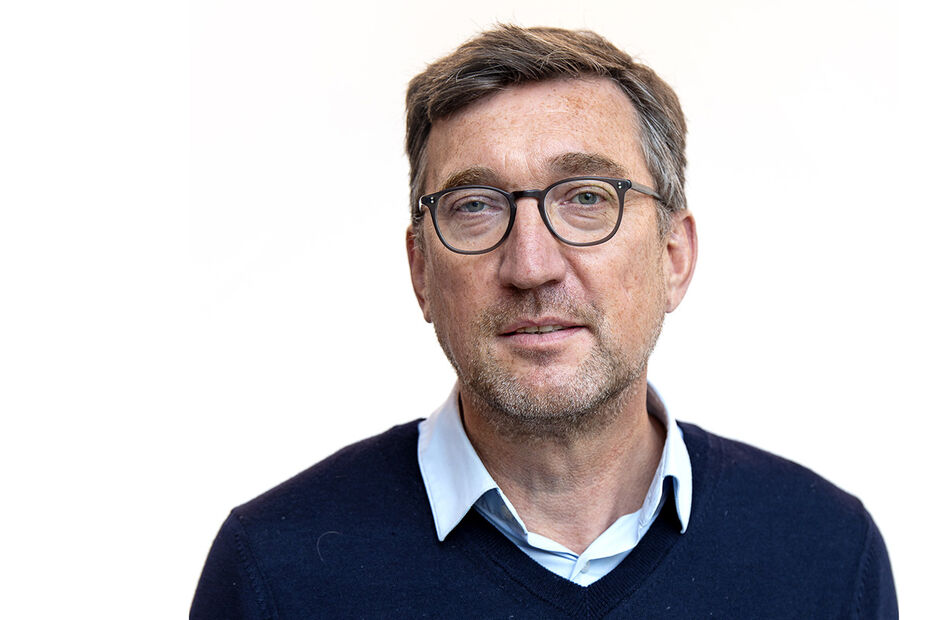
An intelligent city, a smart city, uses its resources wisely
, Observes Urban Planner Prof. Frank Schwartze. Vice President for Research and Regional Cooperation, Professor for Urban Planning and Development at Technische Hochschule Lübeck. Foto: TH Lübeck
Smart cities are inevitable. It is up to us to shape them. Urban planner Frank Schwartze is especially focused on the balance of interests among the respective optimization goals:
Will we use smart city technologies to improve our lives and make our cities more sustainable, or will we rather use them as gadgets to increase our comfort? Will traffic be optimized to allow for more cars, or will technology be used to reduce the consumption of resources? Will we be able to create structures that promote citizen participation in the decision-making process?
There is no doubt that we are at the beginning of complex socio-political changes. Digitalization will affect everyone and everything. However, the smart city will only be successful if we find a balance between people and technology and keep a close eye on our resources.
Expertise at TH Lübeck
At TH Lübeck, we possess a wealth of expertise in computer science, laying the foundation for the science behind Smart Cities. We excel in the development of digital technologies applicable to Smart Cities, with a keen focus on both existing building infrastructure and the mobility sector. In addition to the necessary theoretical knowledge, we also have the practical skills to implement digital solutions in real-world infrastructure. Bridging the gap between machines and cities is where we thrive. Moreover, we are familiar with the economic and social dynamics that underpin the Smart City concept.

Institute for Interactive Systems (ISy)
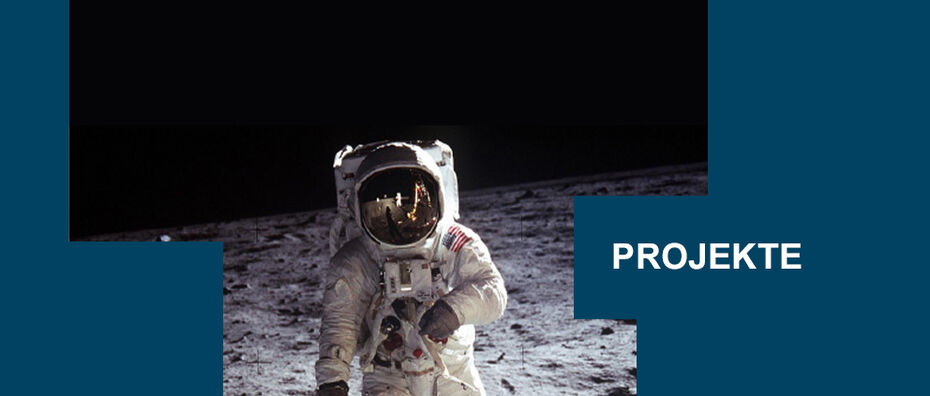
Photo: ISy
The Institute for Interactive Systems (ISy) is one of TH Lübeck's centers of excellence. We conduct numerous third-party funded research projects focusing on the development of interactive systems and technologies.
Among our areas of expertise are digital education, computer-aided communication and cooperation, and human-centered design.
Communication, Systems, Applications (CoSA)
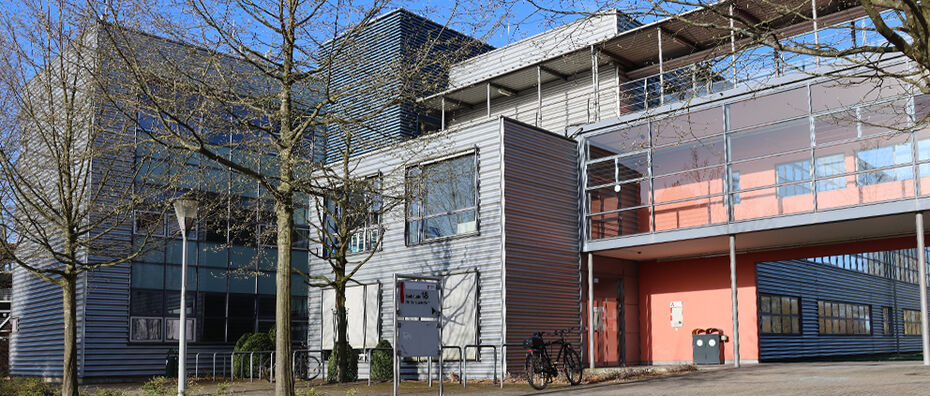
Photo: CoSA
CoSA has been researching and developing communication systems, distributed systems, and their applications for more than 10 years.
We successfully support regional partners in joint research and development projects and work intensively with companies in applied research in more than 25 cooperation projects.
Applied Business Analytics
The Applied Business Analytics research consortium promotes the application of quantitative methods in projects with local businesses and in business education.
We conduct application-oriented research by developing practical solutions for data-driven business decisions, particularly for small and medium-sized enterprises (SMEs).
Institute of Applied Economics (IAW)
The Institute of Applied Economics at the Department of Mechanical Engineering and Business Administration concentrates research and project competencies in economics and business administration within the department. The interdisciplinary structure of the institute brings together relevant expertise in economics and business administration under one roof and promotes interdisciplinary cooperation.
Learn more >>
Cyber-Physical & Human Systems
The Cyber-Physical & Human Systems (CPHS) research group revolves around cyber-physical computer systems and human interaction. Cyber-Physical Systems (CPS) emerge from the interconnection of embedded systems through wired or wireless communication networks.
The multidisciplinary research of CPS explores various application areas, including medical systems, assistance systems, control, automation, and logistics systems, security systems, environmental impact, and observation systems, as well as communication and culture, for example in the context of a digital twin.
Smart Energy
The Research Center for Intelligent Energy Use (WiE) is an institution dedicated to research, knowledge transfer, education, and dialogue in the field of modern energy supply and energy management.
WiE addresses both technical and economic aspects within the context of energy transition, such as smart grids, the intelligent expansion of energy infrastructure, and smart regional energy use.
Learn more >>
IT Security
Digitalization enables us to tap into potentials for increased prosperity, quality of life, and sustainability in all aspects of our lives. Consequently, IT security, privacy, and data protection play an increasingly crucial role in both the workplace and our daily lives.
The research group IT Security embeds the interdisciplinary issue of IT security in research, promotes the transfer of knowledge to the business sector, and integrates it into on-site and online education..
Learn more >>
Artificial Intelligence in Applications (KIA)
Our goal is to demystify artificial intelligence (AI) and pragmatically explore, demonstrate, and apply its possibilities and challenges with a broad range of technical expertise spanning all departments of TH Lübeck.
We strive to apply AI pragmatically and purposefully in various scenarios. Our AI guidelines guide us in identifying innovative use cases with partners and applying them responsibly, securely, transparently, and user-centered.
Learn more >>
Sustainable Planning, Construction, and Operation
The construction and operation of buildings inevitably affect the environment. Sustainable planning, construction, and operation make it possible to implement these within our planet's performance limits. Preserving our natural habitat creates social and economic value for the local, regional, and global community.
This necessitates the sustainable use of natural resources and long-term preservation of acceptable climate conditions.
Learn more >>
Urban Studies
The Urban Studies research consortium includes the disciplines of Sociology of the Built Environment, Urban Development and Planning, Urban Development and Design, and Architectural History and Urban Culture. Through close collaboration, it pursues an interdisciplinary approach to urban development and planning in teaching, research, and application.
The Urban Studies research consortium is committed to sustainable urban development and engages in teaching and research at all levels.
Learn more >>
Climate and Environmental Protection
The Climate and Environmental Protection group at TH Lübeck was founded as an initiative of the Environmental Engineering and Management degree program with the aim of contributing to the concrete development and implementation of measures in practical environmental and climate protection.
This is achieved through research projects and services and the promotion of systemic thinking and the dissemination of practical and sustainable methods in teaching.

Integrated Planning, Construction and Operation
Construction projects are characterized by a multitude of different stakeholders. This results in a large number of interfaces that often hinder the projects. Networked planning, construction and operation will therefore be absolutely essential in the future.
At the same time, due to increasing digitalization, Building Information Modeling (BIM) will become a major focus for everyone involved in construction in the coming years.
Learn more >>
Editorial note
Editorial: Theresia Lichtlein, Johanna Helbing, Markus Zens
Translations: Jochen Herzog
Graphics: Linda Lu Wulf, Astrid Leu
Video: Nils Kurth
Web: Bastian Grümmert
kommunikation(at)th-luebeck.de

